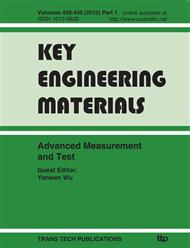p.396
p.401
p.407
p.411
p.417
p.422
p.429
p.434
p.440
Wireless Transmission System Design of Main Shaft Hoist Load Data
Abstract:
Wireless data communication technology under industrial environment is a new development trend in recent years, applying wireless technology to the field of data collection can solve problems and shortcomings caused by wired network, such as cabling, faulty inspection difficulties and so on. Safe operation of mine hoist matters much to the safety of mine production. As a result of the lack of detection measures hoist overload occurs from time to time, it poses a greater threat to safety in production. Combing sensor technology with emerging wireless communication technology, the wireless data transmission technology program that takes P89LPC935 MCU as cored controlling component is designed and provided in this project, constructing a new type of real-time monitoring system for main shaft hoist load.
Info:
Periodical:
Pages:
417-421
Citation:
Online since:
June 2010
Authors:
Keywords:
Price:
Сopyright:
© 2010 Trans Tech Publications Ltd. All Rights Reserved
Share:
Citation:


